Introduction
‘Tis the season for wireless router makers to roll out new stuff to ask Santa for. Actually, it’s more to satisfy the yawning retail maw of Best Buy, Amazon, et al., but I digress.
Exhibit A for today’s examination is Linksys’ WRT3200ACM AC3200 MU-MIMO Gigabit Wi-Fi Router. It’s a kindred spirit to TP-Link’s AD7200 Talon that hit the shelves back in August in two ways:
- It has an inflated class number that may mislead buyers
- Its key "innovation" provides little benefit to most buyers
The WRT3200ACM doesn’t reach as far as the Talon in its attempt to puff itself up into something it isn’t. But by branding itself as "AC3200" class, most buyers will believe they are buying a Broadcom-based "Smart Connect" 3×3 dual-band router with two 5 GHz radios. You’re not. What you’re getting is a Marvell-based dual-band 3×3 AC1900 class router with one 5 GHz radio that supports contiguous 160 MHz bandwidth. The Maximum link rate math works out to 600 Mbps (2.4 GHz) + 2600 Mbps (5 GHz) = 3200.
Getting the 5 GHz 2600 Mbps maximum link rate requires a 3×3 client that also supports contiguous 160 MHz bandwidth. The only device on the planet that currently can do that is another WRT3200ACM in wireless bridge mode, which is what Linksys sent for testing.
With plain ol’ standard 802.11ac devices that support only 80 MHz wide channels, maximum 5 GHz link rate will be 1300 Mbps, the same as other 3×3 AC routers. So with 600 Mbps in 2.4 GHz and 1300 Mbps in 5 GHz, you get 1900 Mbps, which is how I’m classing the WRT3200ACM.
The WRT3200ACM sticks to the WRT family playbook and can be easily mistaken for the WRT1900AC or WRT1900ACS, right down to the front panel lights and rear panel connectors, including the unusual eSATAp port.
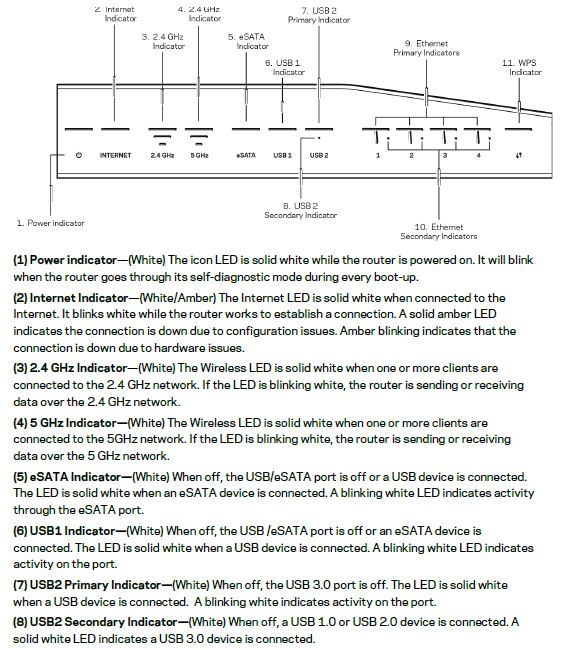
Front panel callouts
Those reviews have the details, which I won’t repeat here.
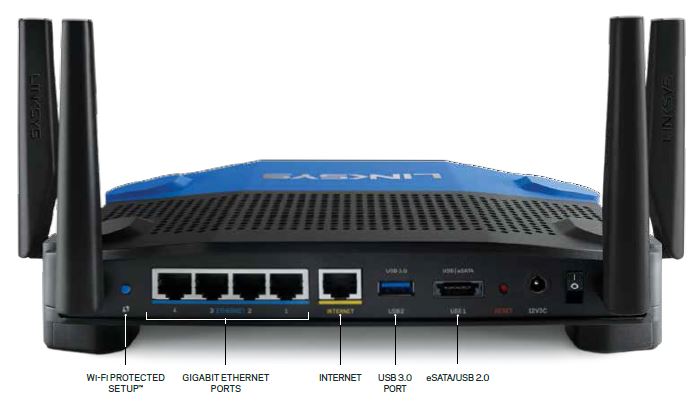
Rear panel callouts
Inside
FCC short-term confidentiality expires at the end of this month, but I’m doing the review right now. So I had to open one of the review samples after testing was done to take photos.
The first photo shows the board assembly after removing the plastic case and with all heatsinks in place. The processor, switch and RAM are under the big heatsink on the left. The 5 GHz radio is in the middle and 2.4 GHz radio at the right. Both radios share four external dual-band antennas that connect via RP-SMA connectors.
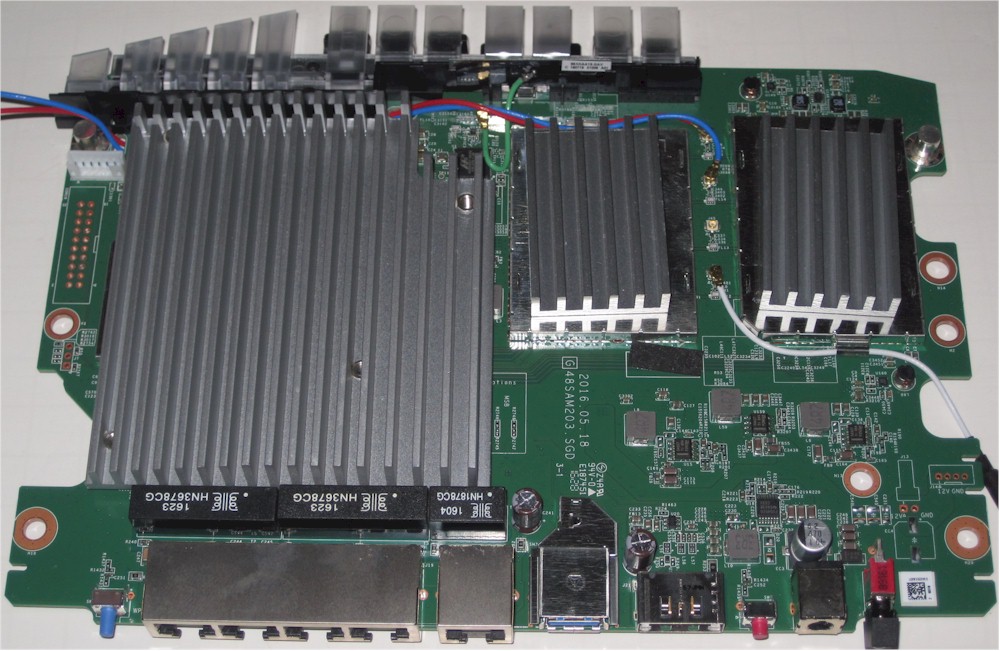
Linksys WRT3200ACM board top with heatsinks
Here’s the view with all heatsinks and RF can tops removed. The small device at top center is the 5 GHz DFS monitor radio in the form of a Marvell 88W8887-NAA2 WLAN/Bluetooth/NFC/FM Receive Single-Chip SoC. Its antenna sits close by, behind the middle LED bank (connected via the short green cable).
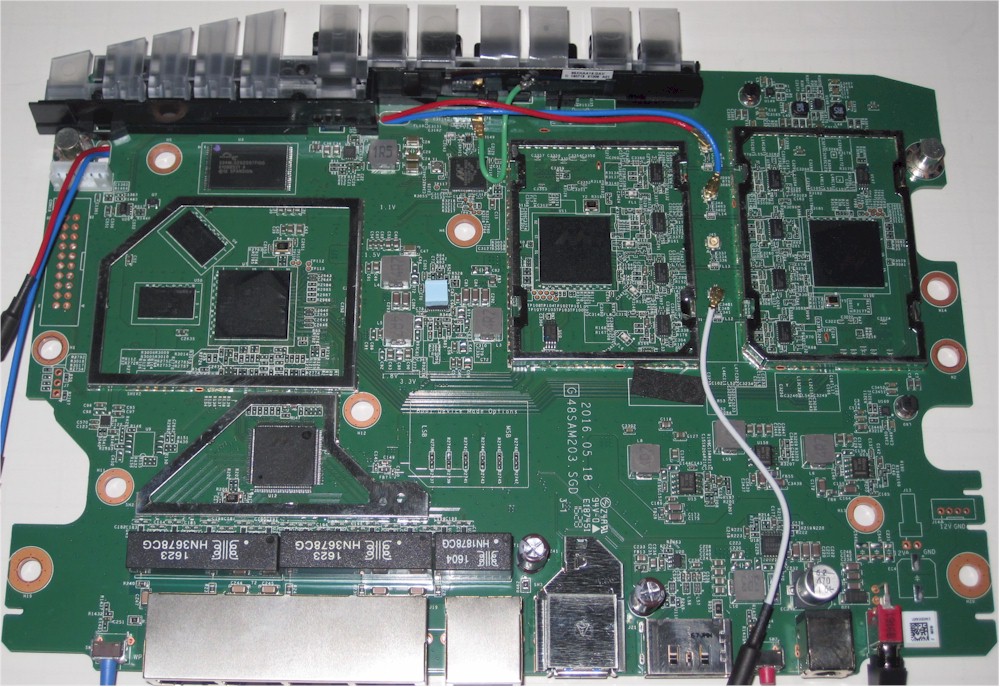
Linksys WRT3200ACM board top without heatsinks
The bottom of the board reveals two Micron 128 MB DDR3 chips, one for each of the Marvell 88W8964-BTW2 radios.
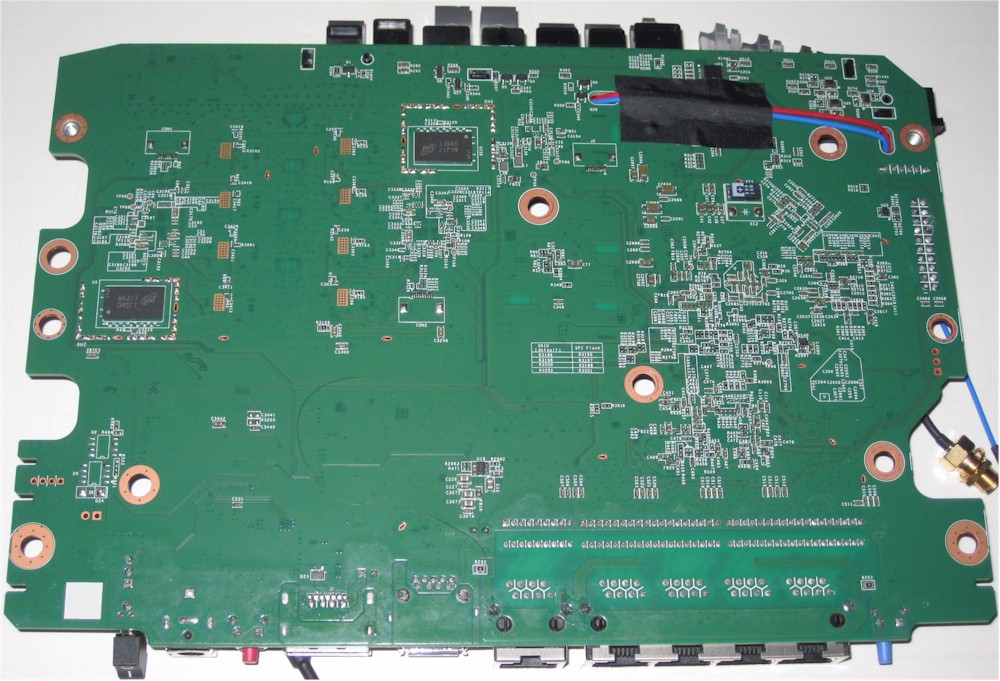
Linksys WRT3200ACM board bottom
Like the WRT1900AC and ACS, the WRT3200ACM is a three-stream AC router using four transmit / receive chains. The WRT1900’s use Marvell 88W8864’s for both radios; the WRT3200ACM uses the 88W8964. Here’s a photo of the WRT1900ACS board top for comparison.
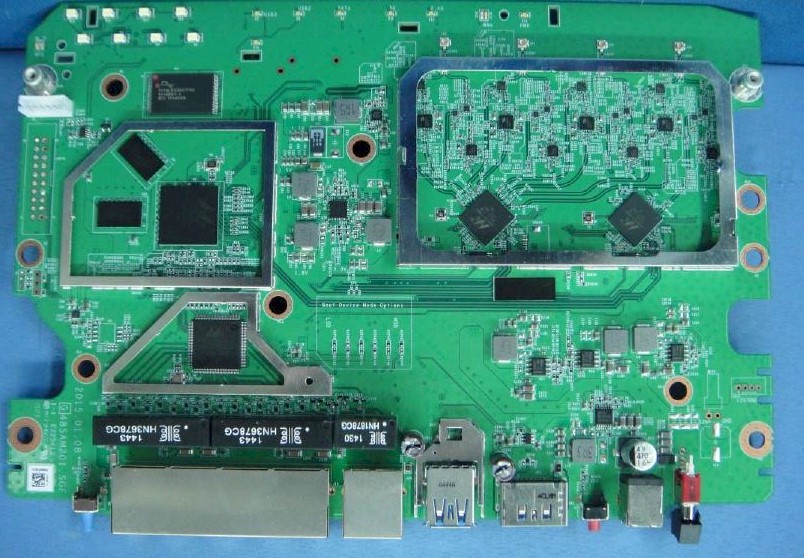
Linksys WRT1900ACS board – naked
The 88W8864 data sheet states "4×4 MIMO 3-spatial Stream Dual-band 802.11ac offering 1.3Gbps WLAN PHY rate" (emphasis mine). That is pretty clear. But the 88W8964 data sheet doesn’t state the number of spatial streams, instead opting for the vaguer "4×4 MIMO Dual-band 802.11ac Wave-2 solution enabling 2.6 Gbps WLAN PHY rate". But the 2.6 Gbps doesn’t refer to the total link rate of a standard 4×4, four-stream design. Instead it refers to only the maximum 5 GHz link rate made possible when the contiguous 160 MHz bandwidth mode is used. Got it?
Fortunately, Linksys was very helpful in sorting all this out and gave direct answers to my questions.
The WRT3200ACM’s key components are in Table 1. I included the WRT1900ACS and the only other router that supports 160 MHz bandwidth, NETGEAR’s R7800, which supports 80+80 mode.
| Linksys WRT3200ACM | Linksys WRT1900ACS | NETGEAR R7800 | |
|---|---|---|---|
| CPU | Marvell Armada 38X dual-core @ 1.8 GHz (88F6820-A0 C180) (ARMv7) |
Marvell Armada 38X dual-core @ 1.6 GHz (88F6820-A0 C160) (ARMv7) |
Qualcomm dual-core IPQ8065 Internet Processor @ 1.7 GHz |
| Switch | Marvell 88E6352 | Marvell 88E6172 | Qualcomm Atheros QCA8337 |
| RAM | 512 MB | 512 MB | 512 MB |
| Flash | 256 MB | 128 MB | 128 MB |
| 2.4 GHz Radio | – Marvell 88W8964-BTW2 – Skyworks SKY85309-11 2.4 GHz front end (x4) – 128 MB DDR3 RAM |
Marvell 88W8864 – Skyworks SE2623L 2.4 GHz power amplifier (x4) – Unidentified switch and LNA (x4) |
– QCA9984 4×4 MU-MIMO 802.11ac radio – Skyworks SE2623L 2.4 GHz power amp (x4) |
| 5 GHz radio | – Marvell 88W8964-BTW2 – Skyworks SKY85728-11 5 GHz front end (x4) – 128 MB DDR3 RAM |
Marvell 88W8864 – RFMD RFPA5522 5 GHz power amplifier (x4) – Skyworks SKY85601 5 GHz LNA + switch (x4) |
– QCA9984 4×4 MU-MIMO 802.11ac radio – RFMD RFPA5542 5 GHz PA module (x4) |
| 5 GHz monitor | Marvell 88W8887-NAA2 WLAN/Bluetooth/NFC/FM Receive Single-Chip SoC | N/A | N/A |
Table 1: Component summary
Features
The WRT3200ACM features Linksys’ standard Smart Wi-Fi OS including OpenVPN support. Part 1 of the EA6500 review provides a good summary of Smart Wi-Fi’s features. The WRT1900ACs review describes OpenVPN.
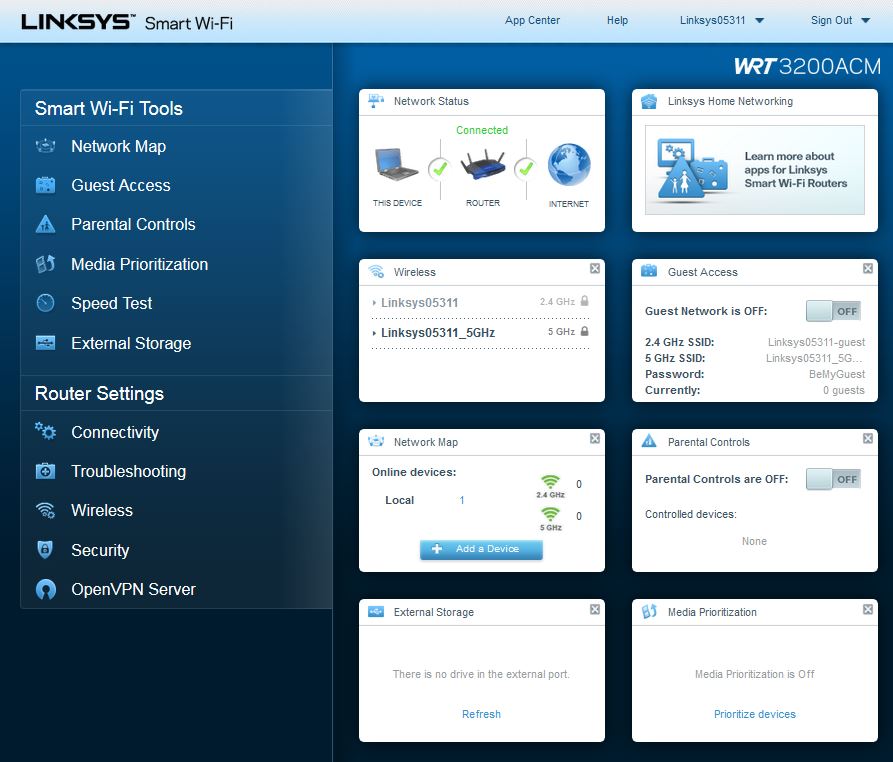
Smart Wi-Fi dashboard
Wireless controls are fairly basic. The defaults are shown below and include unique network name (SSID) and passwords for each router. MAC address filtering can be set to allow or deny.
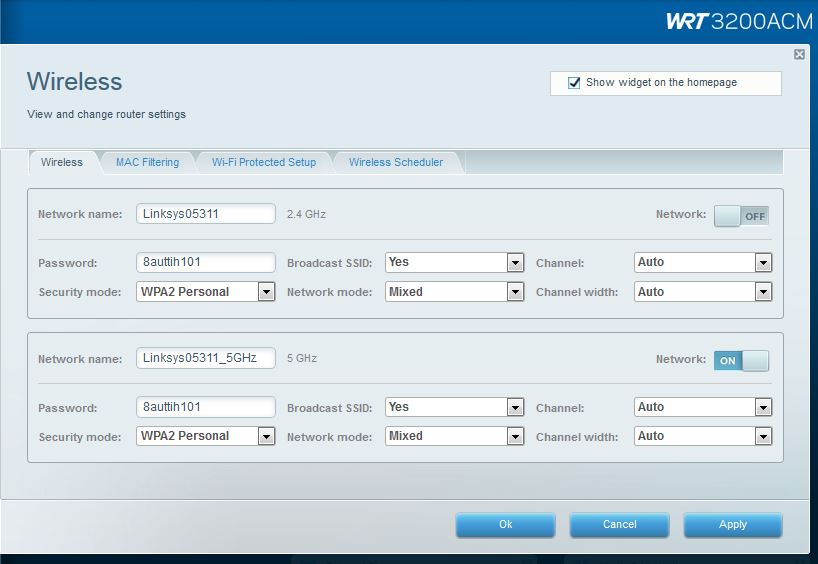
Wireless settings
The Wireless Scheduler is pretty flexible; you just click on the grid to set desired on/off periods.
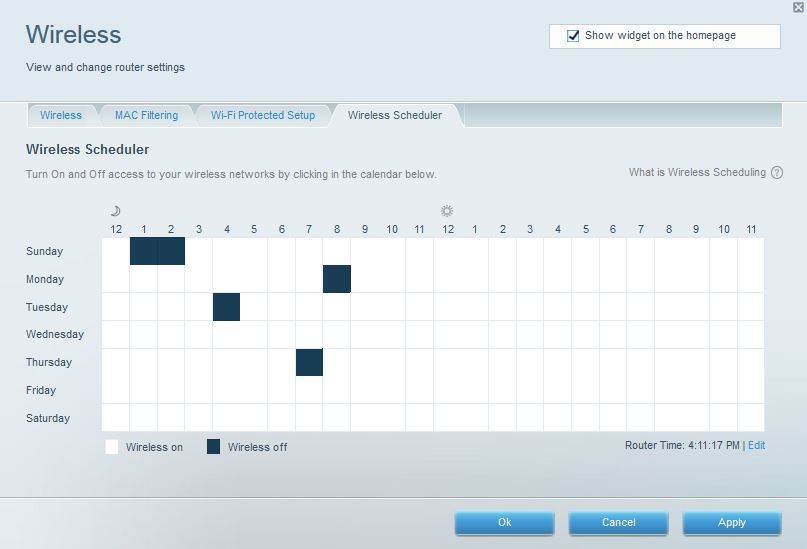
Wireless scheduler
The Channel and Channel width selectors hold the keys to the WRT3200ACM’s uniqueness. I had to do some cut-and-paste to show all available 5 GHz channels. Brackets [ ] in the Channel Width dropdown indicate restricted options. Selecting either 80 or 160 MHz bandwidth pops up an alert informing you those options aren’t supported when Network Mode is Mixed. Changing the mode to 802.11ac only enables the 80 and 160 MHz channel widths.
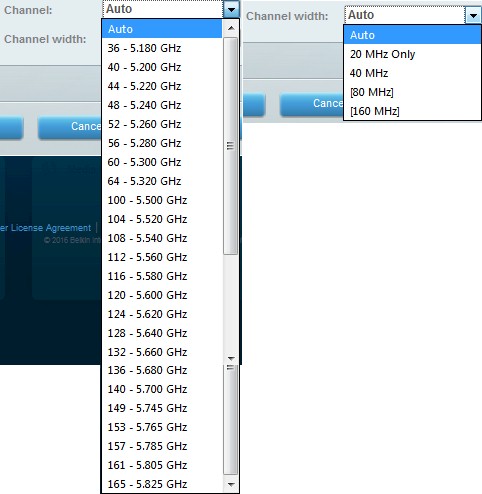
Channel and Channel width settings
Accessing Advanced Wireless Settings requires changing the admin URL end from home.html to advanced-wireless.html. Mess with these settings at your own risk. The Marvell tab holds only Transmit Beam Forming (TXBF) and TXBF 3×3 Streams Only enables; the former is default enabled, the latter is not.
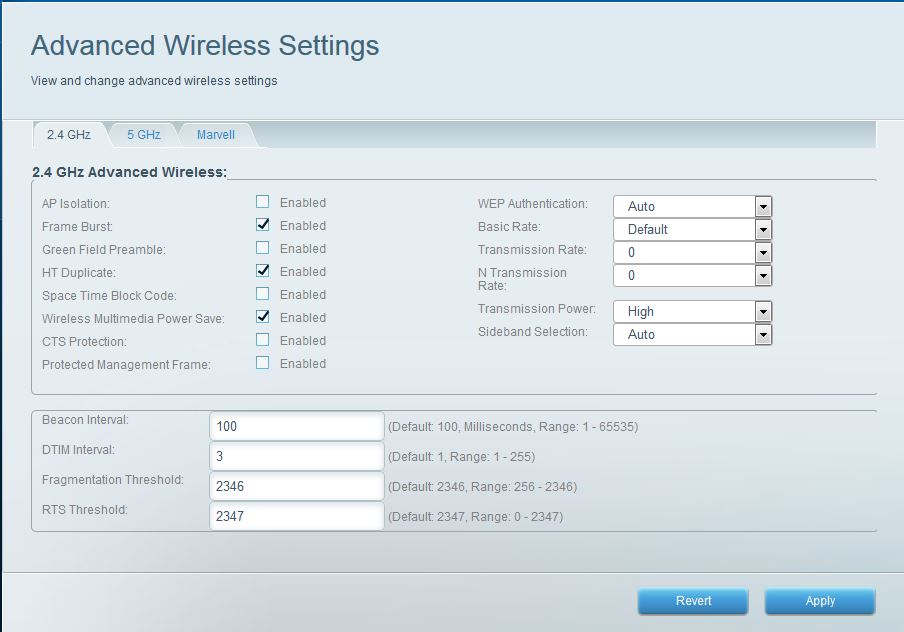
Advanced wireless settings
Note there are no controls for 160 MHz bandwidth mode, DFS or MU-MIMO, all of which the WRT3200ACM supports. More on those later. Guest access is also supported with separate SSIDs for each band. You can limit the number of guests from 5 to 50 in 5 guest increments.
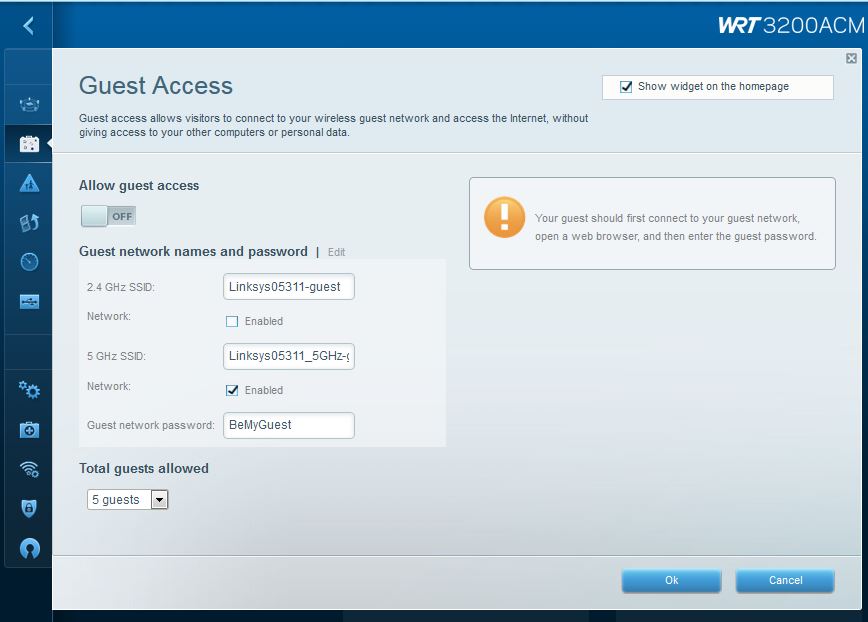
Wireless guest access
Storage Performance
The WRT3200ACM continues Linksys’ tradition of topping the router storage performance benchmark charts. The summary below shows most USB 3.0 benchmarks are close to basically maxing out the capability of a Gigabit Ethernet connection.
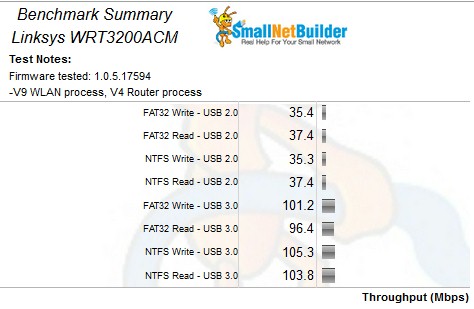
Storage Performance Comparison – USB 3.0 / NTFS
Here’s how the WRT3200ACM stacks up against other recently-tested products.
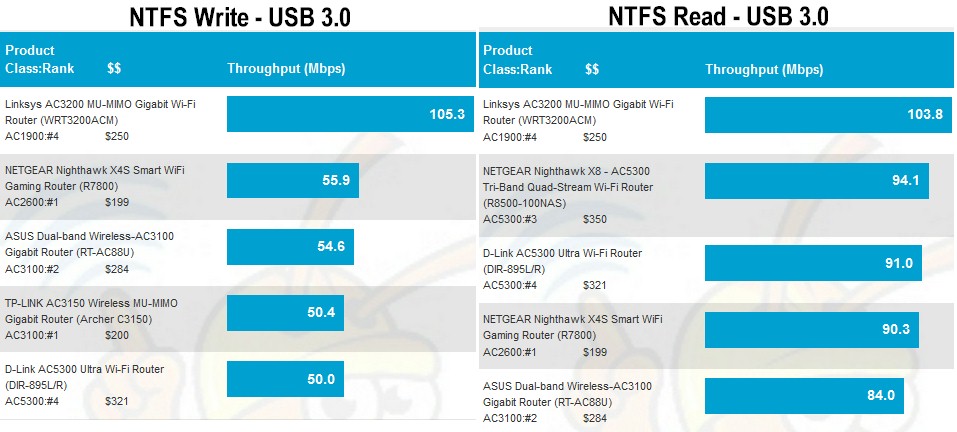
Storage Performance Comparison – USB 3.0 / NTFS – Test Method 9
Our router storage test process actually didn’t change from the Revision 8 test method. There’s where you’ll find the other WRTs topping the charts.
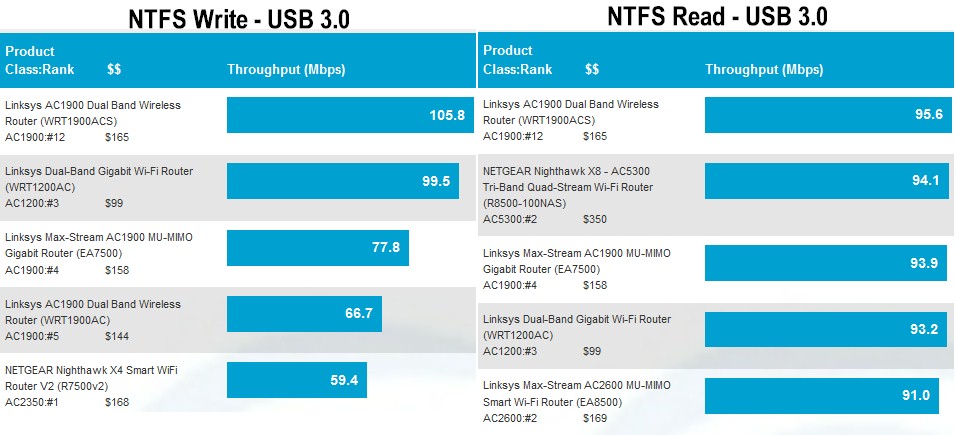
Storage Performance Comparison – USB 3.0 / NTFS – Test Method 8
Routing Performance
The WRT3200ACM was loaded with 1.0.5.175944 firmware and tested with our V4 router test process. You can download an Excel test summary that contains all functional and performance test results. Table 2 summarizes the performance test results.
| Test Description | |
|---|---|
| WAN – LAN TCP (Mbps) | 539 |
| LAN – WAN TCP (Mbps) | 543 |
| Total Simultaneous TCP (Mbps) | 1082 |
| TCP Connection | Pass |
| WAN – LAN UDP (Mbps) | 358 |
| LAN – WAN UDP (Mbps) | 460 |
| Total Simultaneous UDP (Mbps) | 847 |
| UDP Connection | Fail |
| Functional Score (%) | 96.3 |
Table 2: Routing performance comparison
I’ve been using Total Simultaneous TCP/IP and UDP throughput as performance differentiators in the V4 process. The comparison charts of AC1900 class routers show the WRT3200ACM suprisingly low in the ranking. Table 2 above shows unidirectional throughput isn’t particularly high either. I suspect this is due to the relatively high number of retries for the TCP/IP tests and packet loss for the UDP benchmarks.
The top-ranked D-Link DIR-879 had 23 total TCP/IP retries in the bi-directional test vs. 18,013 for the WRT3200ACM. Packet loss for the bi-directional UDP test was 50% down and 61% up for the Linksys vs. 0.01% for both directions for the D-Link. Don’t go looking for these numbers in the Charts. Although they are produced by the CDRouter tests, I haven’t added them to the Charts as benchmarks.
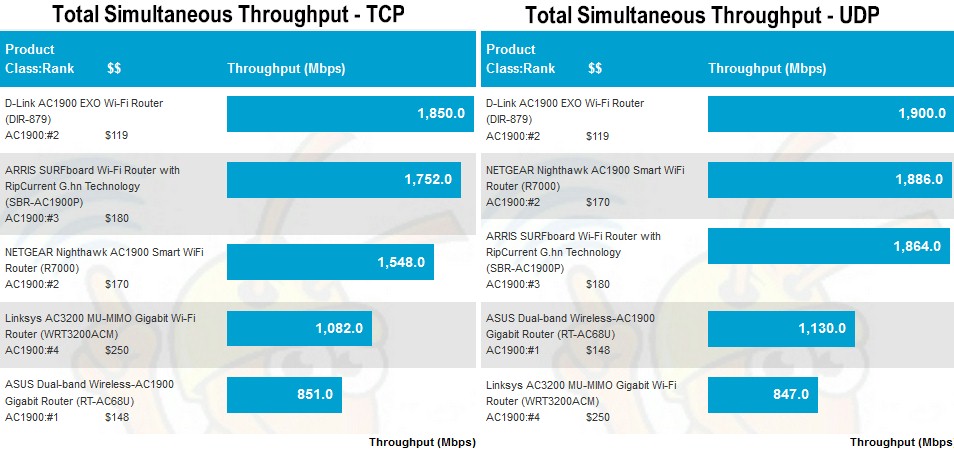
Total Simultaneous throughput comparison
Most products fail the new maximum UDP connection test and pass the TCP connection test and that’s what happened for the WRT3200ACM.
The Functional Score of 96.3% is very good, the best, in fact, for all routers tested so far with the new router test process. This amounts to only 9 failed tests out of 245 in the benchmark suite. The router had none of the obscure DNS test failures we typically see and it failed only one UPnP test. So while the WRT3200ACM’s routing throughput may not be best in class, its routing feature set is very solid.
Wireless Performance
The WRT3200ACM was tested with our Revision 9 wireless test process with 1.0.5.175944 version firmware loaded. Channel 6 and 20 MHz B/W mode was set for 2.4 GHz and Channel 40 and 80 MHz B/W mode was set for 5 GHz. The router was positioned in the test chamber as shown in the photo below.
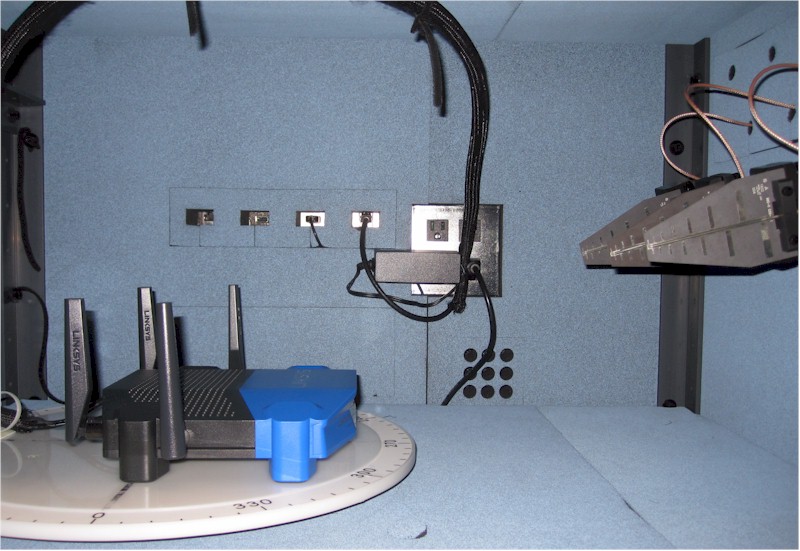
WRT3200ACM in test chamber
As I said in the introduction, the WRT3200ACM will behave as an AC1900 class router unless you pair it with another WRT3200ACM. So I plotted it with three other AC1900 products tested with the Version 9 process, the venerable NETGEAR R7000 and ASUS RT-AC68U and D-Link’s no-frills DIR-879.
The average 2.4 GHz throughput over all points measured is better on downlink (63 Mbps) than uplink (52 Mbps). This puts it behind the ASUS and NETGEAR on downlink, but tied for #1 with the ASUS on uplink.
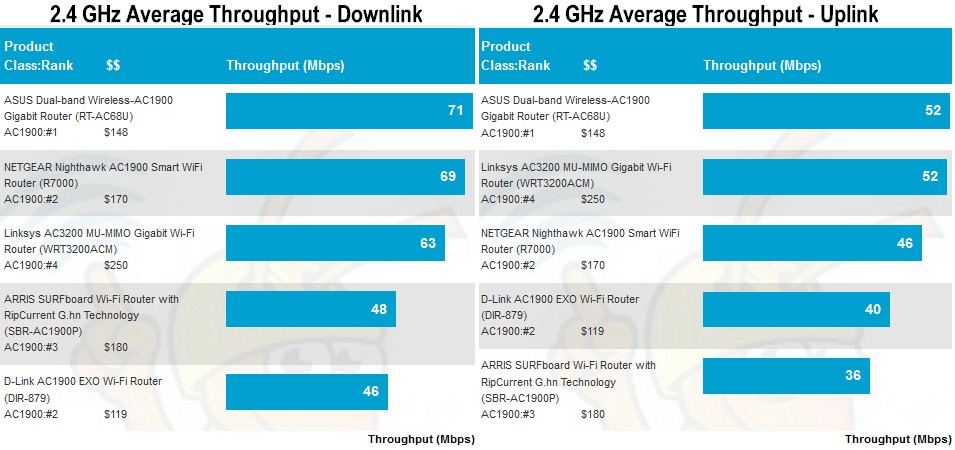
2.4 GHz average throughput comparison
5 GHz averages downlink places the Linksys at the bottom of the heap, while uplink is much better, ranking in second place.
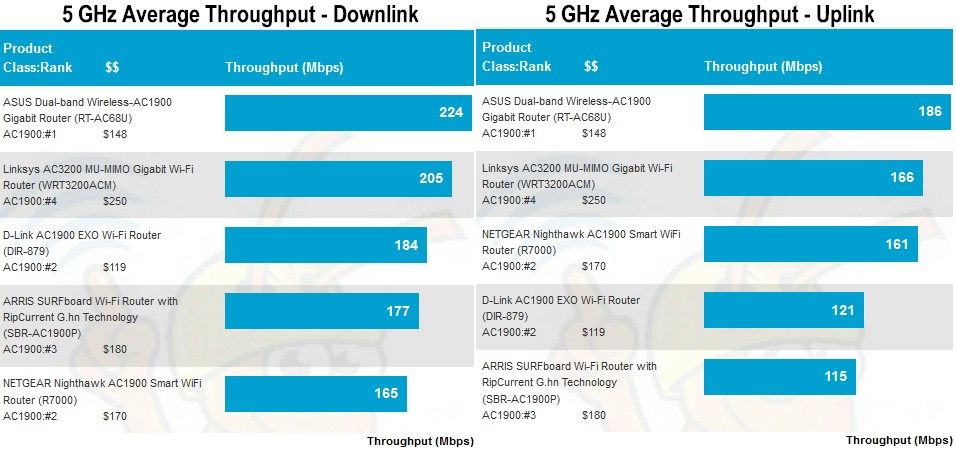
5 GHz average throughput comparison
The throughput vs. attenuation plots show the details behind the averages. The 2.4 GHz downlink plot shows the Linksys running below the ASUS and NETGEAR, but then tracking above the NETGEAR after the 18 dB point. The ASUS, however, starts higher and stays there until it joins the Linksys at 30 dB.
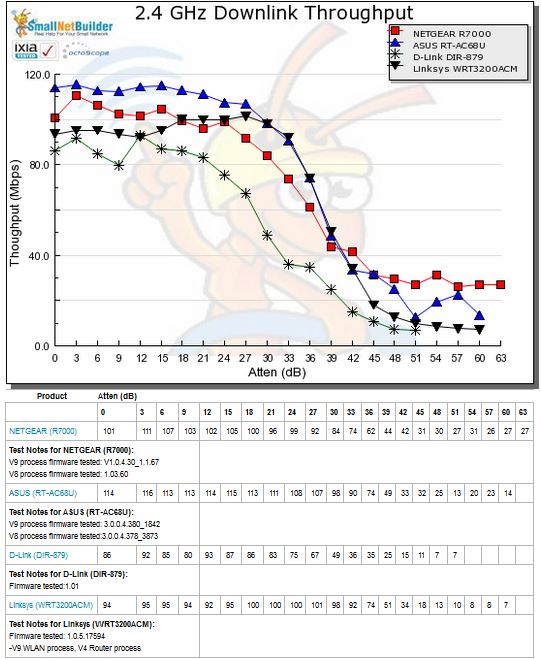
2.4 GHz Downlink Throughput vs. Attenuation
The Linksys does much better on 2.4 GHz uplink, tracking the ASUS through most of the test run.
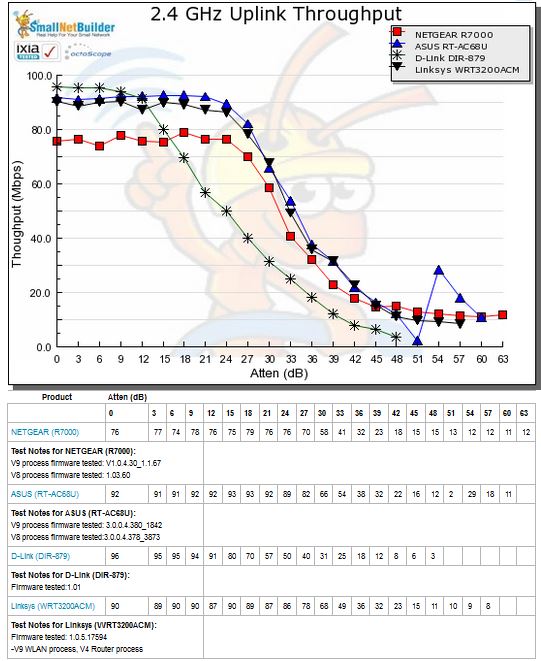
2.4 GHz Uplink Throughput vs. Attenuation
The 5 GHz downlink plot shows a lot of jockeying for position out to the 27 dB point. The WRT3200ACM starts out lower than the ASUS and D-Link, but soon overtakes both and stays above them out to 27 dB. After that, the D-Link takes the lead and is the only product to complete the run out to 45 dB.
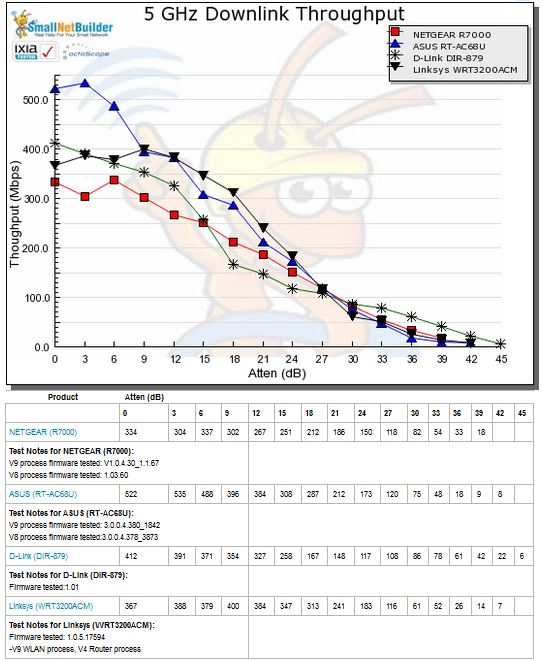
5 GHz Downlink Throughput vs. Attenuation
The WRT3200ACM starts out on top for 5 GHz uplink. but falls off faster than the ASUS and then the NETGEAR. All four cluster pretty tightly at the 30 dB point we use for our 5 GHz range ranking, with the ASUS on top and Linksys in third place.
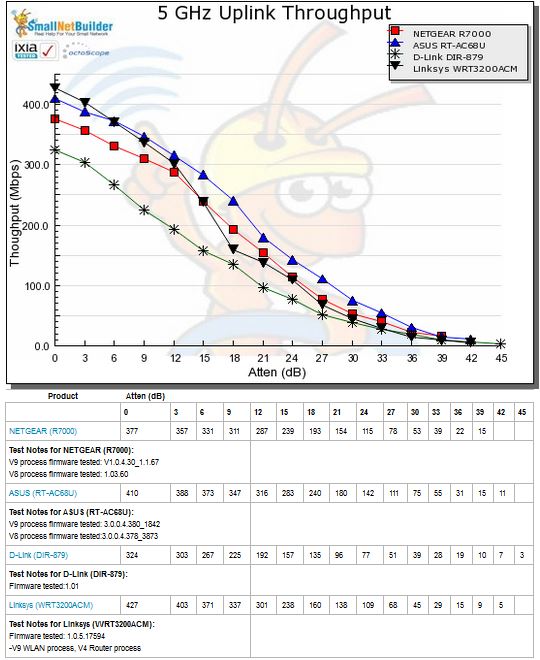
5 GHz Uplink Throughput vs. Attenuation
Maximum Wireless Throughput
We use the Ixia Veriwave that can emulate up to 4×4 ac devices to test maximum throughput. The results posted are an average of 10 one minute test runs. This benchmark is fully described in the Revision 9 test process description. We’re again comparing AC1900 class products. Keep in mind we use 40 MHz bandwidth in 2.4 GHz for this test. Also note that the Veriwave does not support 160 MHz channels. We’ll be testing that next.
This was the first time I tested a product using Marvell’s 88W8964 radio SoC and have to say it was a difficult test. The initial results were so low I had to check with Linksys, who shared their Veriwave settings, which I ended up using. Still, the results below show the WRT3200ACM did not stack up well for this test.
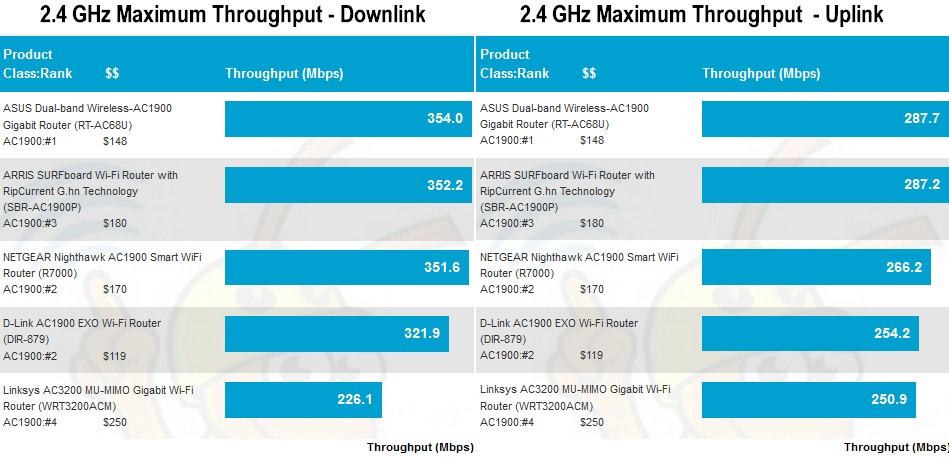
Maximum Wireless Throughput comparison – 2.4 GHz
The WRT3200ACM ended up at the bottom of the group for three of the four benchmarks. Only 5 GHz uplink put the Linksys at the top of the heap.
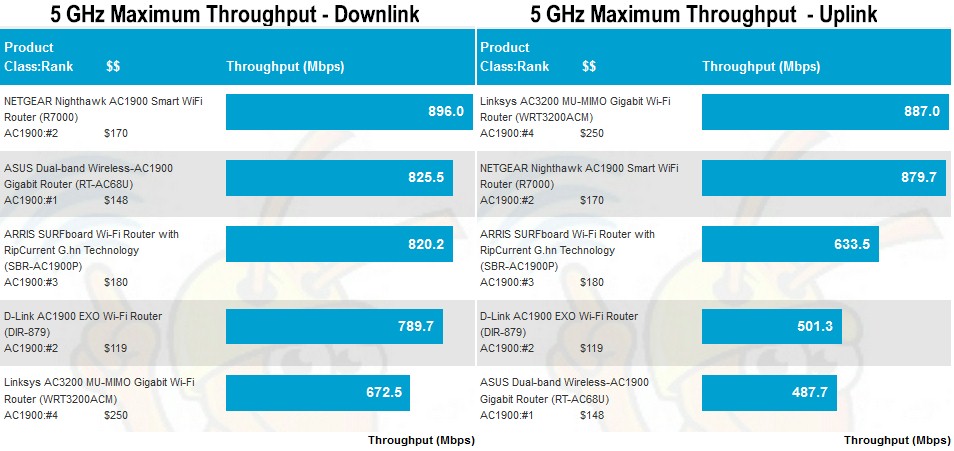
Maximum Wireless Throughput comparison – 5 GHz
160 MHz Performance
I said at the top that the only device you can buy that supports contiguous 160 MHz bandwidth in 5 GHz is another WRT3200ACM. So that is what Linksys sent to test 160 MHz mode performance.
Two WRT3200ACM’s were set up in open air about 8 feet apart, one acting as a router and the other set to wireless bridge mode. Channel 52 was set on the router and the bridge was connected to it. Test runs were made with 80 MHz bandwidth mode set, then with 160 MHz mode, with both router and bridge power cycled between. Note Channel 52 in 160 MHz mode uses all channels from 36 to 64, which includes DFS channels.
I connected the two wireless testbed computers at each end of the link, both of which are Intel Core i5 class machines. IxChariot test runs were done with the two computers connected via Gigabit Ethernet to establish the baseline references shown below. I used IxChariot’s High Performance Throughput script with no changes and TCP/IP for all tests.
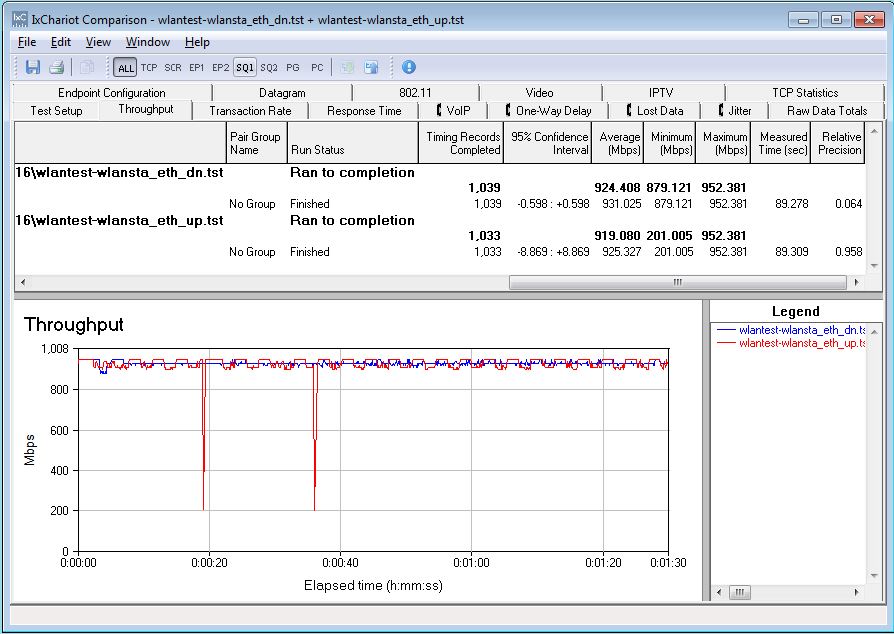
160 MHz test – Ethernet reference
Downlink runs with 80 MHz and 160 MHz modes set are compared below and show no significant difference between 80 and 160 MHz bandwidth. Uplink results were a bit higher, but essentially the same..
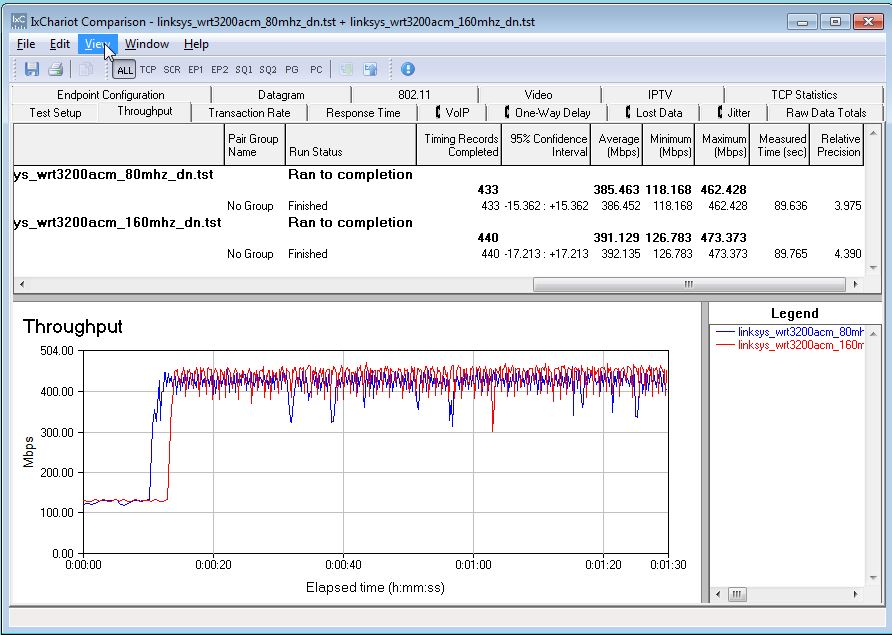
80 and 160 MHz mode comparison – downlink
I shared these results with Linksys, who suggested using four connections in the test. This yielded the results below, showing a 30% improvement using 160 MHz bandwidth mode.
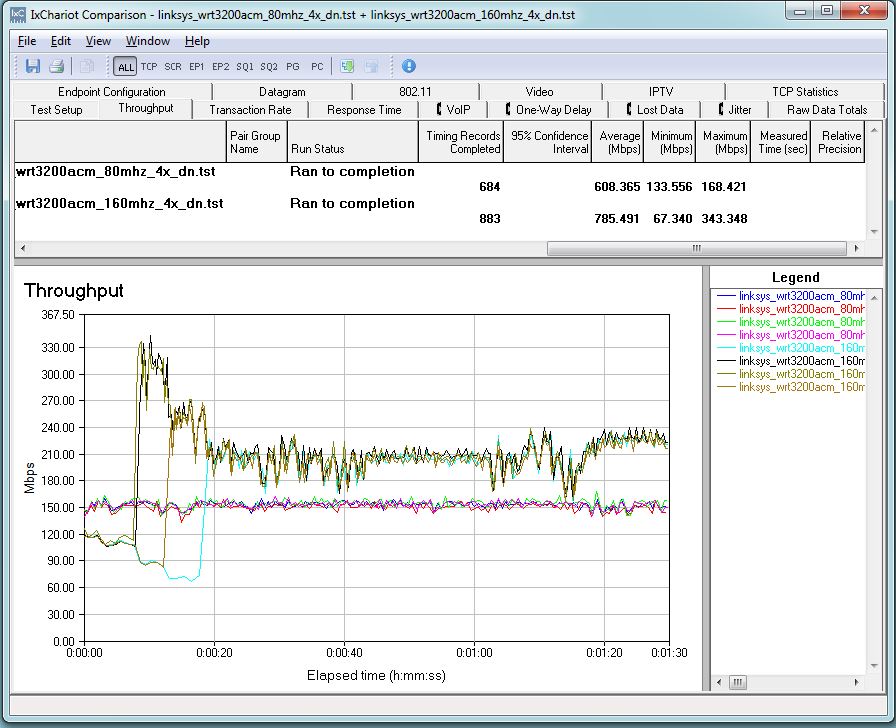
80 and 160 MHz mode comparison – downlink – 4 connections
Uplink with four connections yielded a slightly better 37% throughput gain.
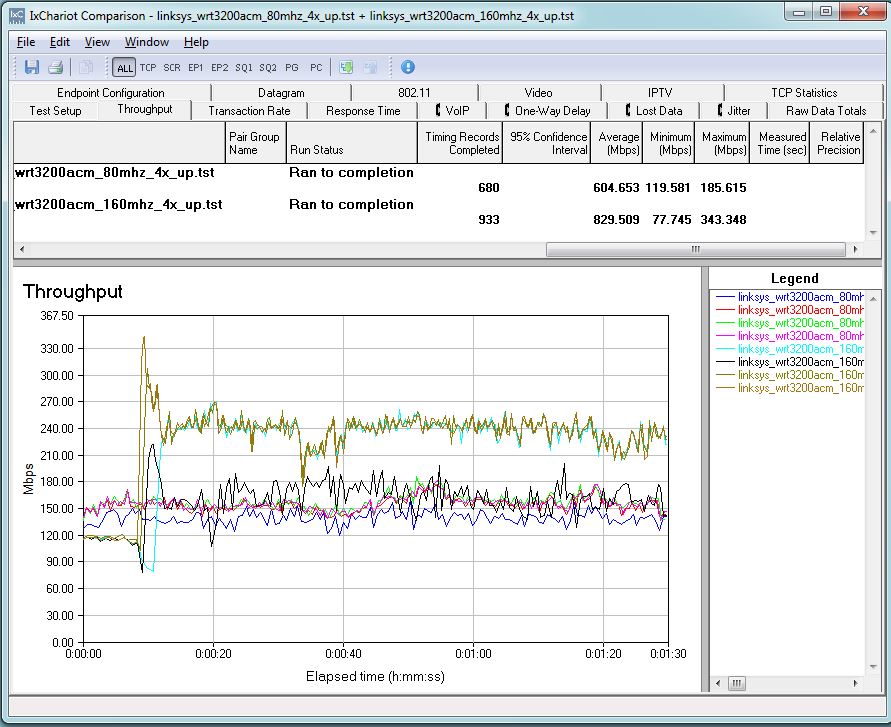
80 and 160 MHz mode comparison – downlink – 4 connections
I also ran Windows drag-and-drops of a 1 GB Windows backup file. Using snapshots at a similar point in each transfer, I saw downlink throughput increase from 82 to 99 MB/s (+21%) and uplink go from 80 to 105 MB/s (+31%). So 160 MHz mode can provide a nice throughput boost, if you don’t mind eating up a lot of channels.![]()
DFS
DFS obviously works, since I was able to run tests using 160 MHz mode. But I learned a few things about Linksys’ current implementation and future plans that I’d like to share. I once again give credit to Linksys for answering my questions directly with no spin involved.
Linksys is currently not using the 5 GHz monitor radio. They instead use the 60 second Channel Availability Check (CAC) required by the FCC when radar is detected. This check drops all clients when radar is detected and maintains radio silence while further radar activity is monitored. In addition, when radar is detected on a channel, that channel won’t be available again for 30 minutes, again due to FCC regulations.
There are only two contiguous 160 MHz channels currently available, 36 – 64 and 100 – 128. Channels 132 and up are greyed out in the channel selector when 160 MHz mode is enabled. This is due to a 5 MHz gap between channel 144 and 149, which doesn’t allow a contiguous 160 MHz channel to be formed. So if you are dropped from the lower channel and have to move to the high (or vice versa) and radar is again detected within the 30 minute window, no clients will be allowed to connect to the 5 GHz band. Of course, if you are using 80 MHz bandwidth, you have more options when it comes to using DFS channels.
Linksys said it is working with Marvell on implementing DFS scanning in the dedicated monitor radio and plans to issue a firmware update once the function is working and FCC certified. However, Linksys has not commited to a timeframe for this.
If you want more details on DFS, including the channel plan, see How To Buy a Wireless Router – 2017 Edition.
MU-MIMO
The WRT3200ACM is the first router I’ve had on the test bench that is based on Marvell MU-MIMO. I had hoped it would just connect up and run with the Veriwave test set, but that was not to be. I’ll continue to work with Linksys and Veriwave to resolve the problem and update this review (or publish results in another MU-MIMO round-up) if I get things working.
Closing Thoughts
So Linksys wins bragging rights for getting to market with the first contiguous 160 MHz router. But as I’ve pointed out many times in this review, this isn’t a particularly useful innovation unless you buy two WRT3200ACMs and use one as a bridge.
In the end, the WRT3200ACM is an expensive AC1900 router at $250, with wireless performance generally comparable to other AC1900 class routers. Its main competitive weakness is that it didn’t produce downlink throughput as high as other products with strongest signals, which caused it to rank lower.
Wired routing throughput will be sufficient for the majority of users, with only those with true Gigabit service perhaps running into the throughput limits we saw in our testing. Its main strength, which it shares with its other Marvell-powered WRT brethren, is its superior storage sharing throughput.
The WRT3200ACM may have "the fastest 5 GHz band of any router", but it’s not one that any mobile device is going to be able to take advantage of for years to come. Even die-hard future-proofers may want to take a long think before jumping on this band-wagon.

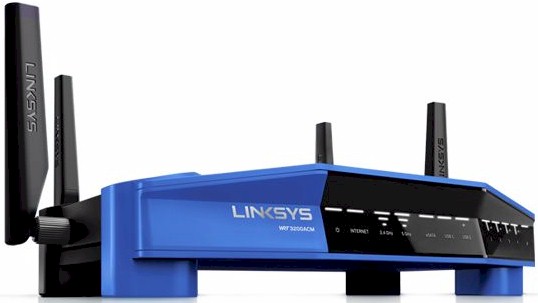 Buy AC3200 MU-MIMO Gigabit Wi-Fi Router from Amazon
Buy AC3200 MU-MIMO Gigabit Wi-Fi Router from Amazon